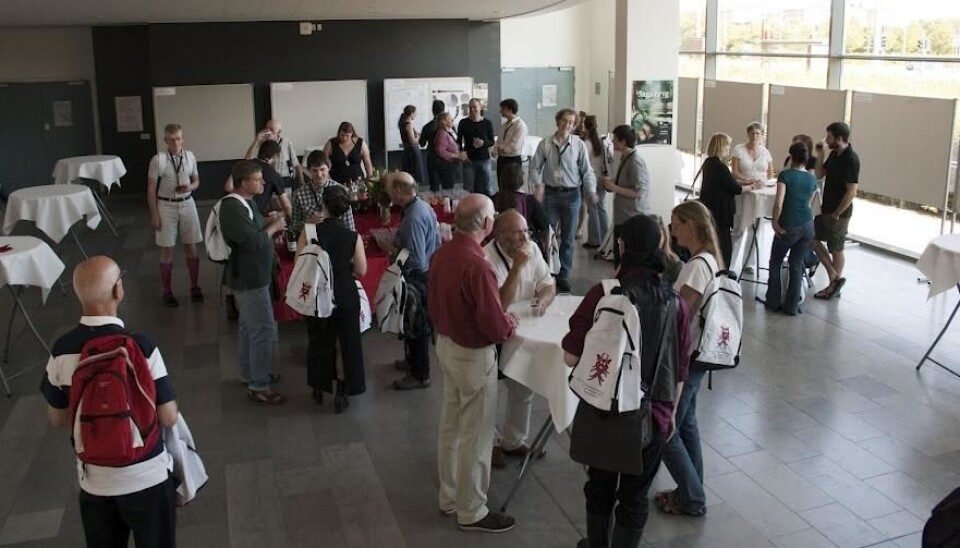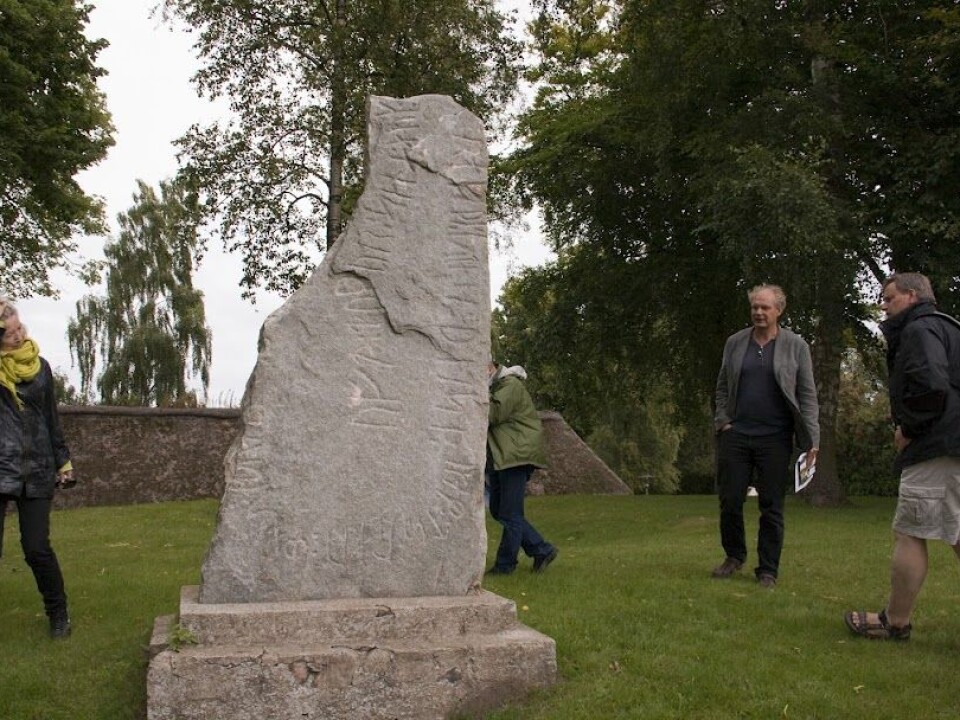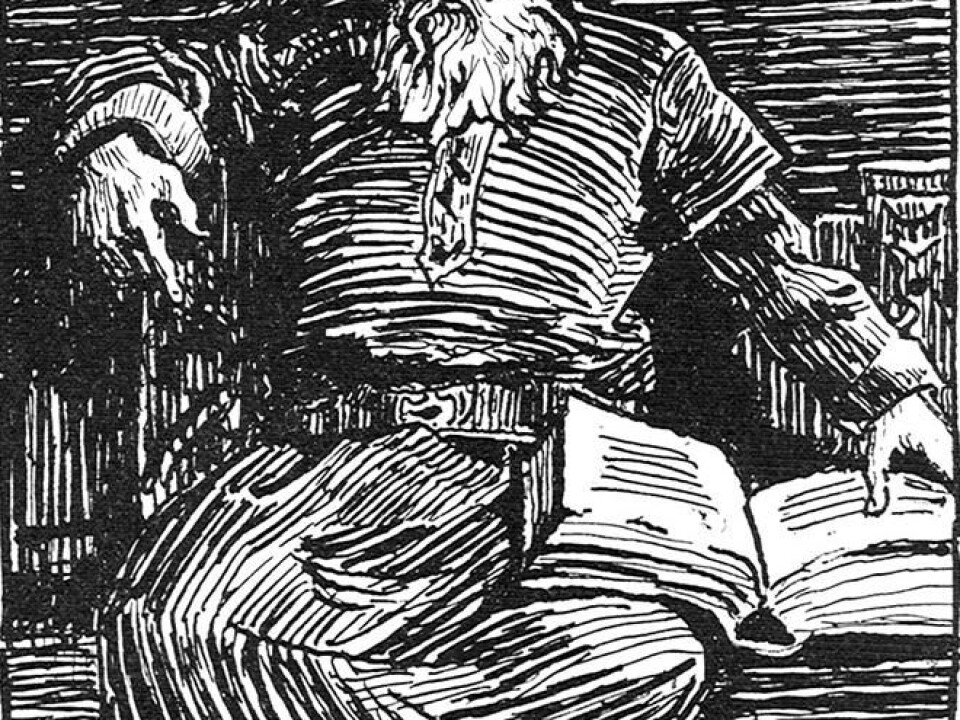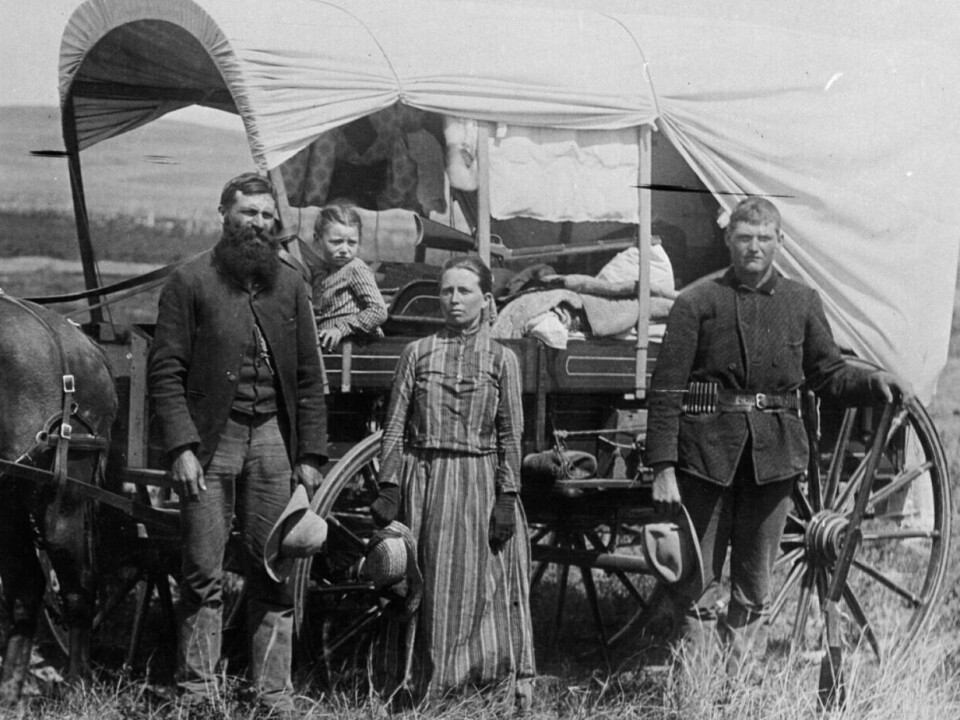
Saga professors toast with Viking ale
More than 300 of the world’s leading Norse mythology researchers met at the 15th International Saga Conference earlier this month in Denmark.
They normally sit with their heads buried in Old Norse writings.
Earlier this month, though, they found themselves in the Danish countryside drinking Middle Age beer, singing ancient songs and visiting breweries. It’s certainly not boring when more than 300 professors, researchers and students from five continents meet to discuss sagas.
“We asked the St. Clemens brewery in Aarhus to brew a beer for the occasion,” says conference organiser Ulla Loumand.
“The beer is inspired by recipes used by Vikings when they settled in Iceland. The brewery has been our meeting place all week, and here we can drink a toast to the spirit of the sagas.”

A key ingredient in the specially-brewed Middle Age beer is juniper berries, which the brewmaster has crushed with a hammer.
Saga beer and Icelandic music
The saga beer with the Old Norse name ‘Landnambryg’ is such a great hit that it prompted some of the world’s most renowned professors in Nordic mythology to bring out their guitars and start playing Icelandic songs at St. Clemens.
Over the course of the week-long conference, the brewery became the preferred place for the participants to meet when they were not busy with field trips or seminars at the University of Aarhus.
The schedule for the conference was packed with seminars and debates on everything from body language in the Icelandic sagas to Italian translations of Old Norse writings.
Unique literature about ordinary people

University researchers from countries as far away as Mexico, Japan and Australia made their way to the International Saga Conference, which is held every three years in a new location – and this year broke the attendance record.
This indicates a growing interest in Old Norse writings and everything associated with them – and that’s no surprise, say the organisers.
“The sagas are a unique type of medieval literature because they deal with ordinary people’s lives,” says Jens Peter Schjødt, a professor of Nordic religion at Aarhus University.
“You won’t find anything similar from that age anywhere else in the world. Other countries only wrote about the aristocracy and the church in those days – about kings, the people around them and the clergy.”
Vikings made sagas popular
Everyone is fascinated with Vikings, and we can thank them for the popularity of the sagas, says Schjødt, who helped organise the conference.
He’s backed up by fellow organiser Pernille Hermann, an associate professor in Scandinavian Languages and Literature at Aarhus University:
“You could say the Vikings are a kind of brand for Scandinavia. But there are many untrue myths surrounding them, for instance that they wore horned helmets, she says. “If you want to know anything scientific about the Vikings from written sources, you won’t find it anywhere else but in the sagas.”
The saga conference presents researchers and students with a unique opportunity to make contacts and be inspired by other like-minded people.
“Saga research is an interdisciplinary field of study, and here at the conference we have people representing a wide variety of research disciplines,” says Hermann. “In my research department there are very few people who work with Old Norse texts, so it’s great to meet like-minded people here at the conference.”
Saga Singers added the finishing touches
Nordic mythology experts are far from being big shots. This became apparent in the lunch breaks, when the Saga Singers choir gathered in a classroom at the Faculty of Theology to practice their songs.
“We’ve been practicing renaissance songs all week. Unfortunately we can’t sing songs from the Middle Ages, when the sagas were written, because there are no polyphonic songs on print from that period,” says conductor Agathe Hahn, a PhD student at Copenhagen University’s Department of Scandinavian Research.
“We started up this choir spontaneously simply because some of the people fancied a bit of a sing-along. They’re not used to singing together.”
Hahn was appointed as the choir’s conductor because in addition to her Scandinavian research, she has also studied musicology in Germany.
The Saga Singers performed their songs – to great applause – at the big dinner on the final night of the conference.
-------------------------------------
Read the Danish version of this story on videnskab.dk
Translated by: Dann Vinther







